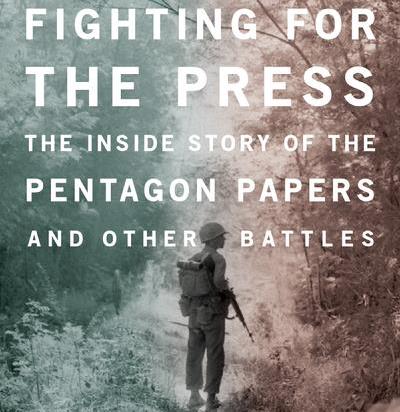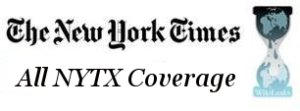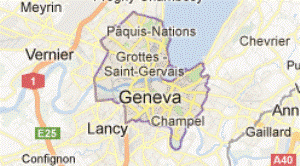NEW YORK » NYT & LAW » PRESS THE PRESS » VIDEO
Fighting for the Press with James C. Goodale, Pt. 1
November 15, 2013 · 0 Comments

James C. Goodale interviewed by Chris Spannos:
James C. Goodale was chief counsel for the New York Times during the Pentagon Papers case. He is also former vice chairman of the New York Times Co. and is a leading legal expert on the First Amendment. NYTX Editor Chris Spannos interviewed James about his book. There is both video and text versions of the interview below. This is part one of a three part interview.
This interview is being published as part of our fundraising effort to raise $15,000. If you appreciate the work that NYT eXaminer does, please make a donation to help us continue producing.
Interview:
Chris Spannos (CS): Looking at your book, what makes the Pentagon Papers significant in the history of publishing?
James C. Goodale (JC.G): Well, it’s significant in the history of publishing because it was the first time a leak of this size had ever taken place.
Now, there had been leaks before in American history and they have been reasonably substantial, at least one that I can think of.
But, I mean, this was two million words. So that was the world’s record, broken by WikiLeaks later.
And so the huge size of the leak made it particularly noteworthy in history.
And then the subsequent suit by the government, which was the first such attempt by the United States government in its history, to stop – that’s to say censor – publication and its consequent failure has made this an historic case because of the facts.
I mean it’s a pretty unusual set of facts.
And then historic because the government lost, or, to put it the other way around, the press won in a stirring victory.
So you have particular peculiar facts, all in the middle of a war, with a great and important decision.
So it has a place in history for all those reasons.
CS: What was it about the content of the Pentagon Papers that made you believe, as legal counsel for the New York Times, that the Times should go ahead and publish? You were quite adamant in your book that they should be published. So what was it about the Papers that drove you to that?
JC.G: I think I was adamant because, when you think about the First Amendment, and let’s say you think about Clear and Present Danger – that wasn’t the precise test that was used here but most people are familiar with Clear and Present Danger – and so when you opened up and read these papers there wasn’t any sense of Clear and Present Danger.
There was a sense of déjà vu! Which is that you have seen much of this stuff before.
A little bit like the leak that took place with respect to the NSA, which is in our previous segment.
There were for example, duplications of New York Times stories, and material of that nature.
And I just didn’t think there was any reason the First Amendment wouldn’t protect it.
Which is another way of saying that, when you looked at it, it didn’t seem to be particularly dangerous.
There are two different tests.
Editors had to figure out what they thought was appropriate.
And then I had to look at the consequential editorial work and decide whether it was good under the First Amendment.
And I just didn’t think there was any doubt.
CS: On NYT eXaminer we published an expert from your book, chapter nine, “A First...”
JC.G: Oh, how did it go? Did anyone read it?
CS: Yeah, yeah. It had great visibility.
JC.G: That’s great.
CS: Good visibility.
JC.G: Remind me what chapter nine is!
CS: “A First Look at the Pentagon Papers”…
JC.G: Oh yeah, that’s when I first looked at it. Well I pretty much just told you what’s in that chapter.
CS: Right. But what was it like, you know, in your office in the Times, getting the Papers?
JC.G: Well, it was a little unique because the Pentagon Papers – forty-seven volumes, two-million words – were rolled in on a super market cart, you know.
And I looked at them and I said, no way am I gonna read all those.
Well, so I start reading it, and, awe jeez, what’s? I mean we can’t publish something like this?
It was like picking up a book in a survey course of history in any university or anywhere else in this country; and picking up the history which was laid out, plus the documents.
I mean it was like a homework assignment from History 10. That’s what it was.
CS: But I gather that, despite that familiarity to you and the non-threatening dimension to you, other people inside the Times felt differently about it. I want to know what the different attitudes were inside the Times and how this affected the strategy to publish.
JC.G: Well, there is a Latin phrase…
END OF PART 1: Interview to be continued
This interview is being published as part of our fundraising effort to raise $15,000. If you enjoyed it and appreciate the work that NYT eXaminer does, please make a donation to help us continue to our work.
By admin










Sorry, comments are closed on this post.